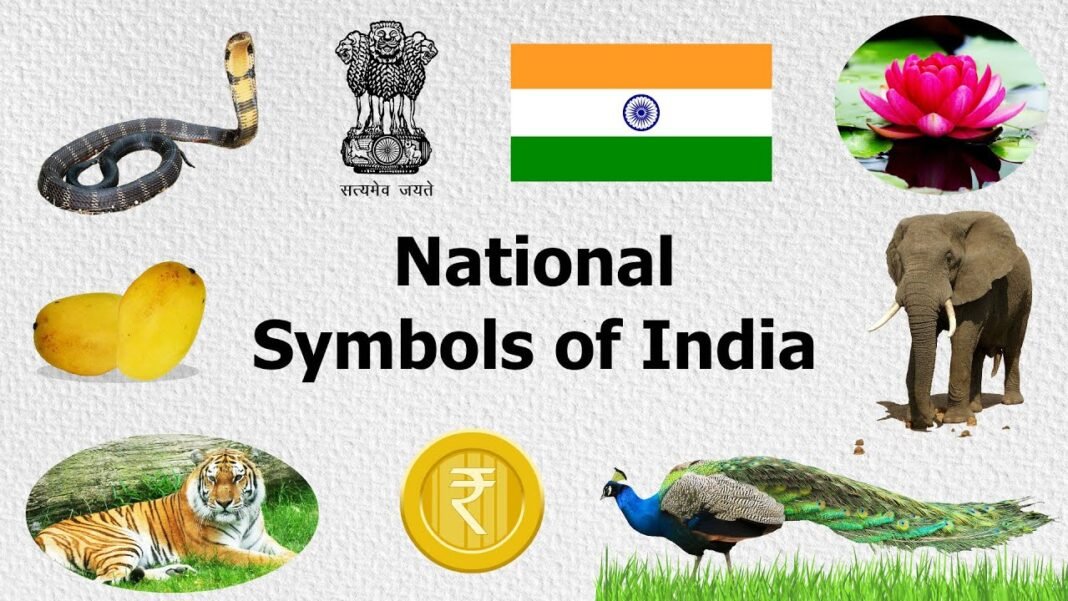In this article, we reflect on and detail the national symbols of India which every Indian must be aware of. So let’s get started.

National Flag
India’s national flag represents sovereignty and harmony. It has three colors and a rectangle-shaped design. Tiranga and Tricolor are other names for it. The 3 colors are saffron on the op, which represents courage and sacrifice, white in the center, representing truth and peace and green represents faith and fertility. In the middle is the Ashok Chakra with the 24-spoked wheel in navy blue color.
National Anthem
India’s National Anthem Rabindranath Tagore’s original Bengali composition Jana-Gana-Mana was selected as India’s National Anthem on January 24, 1950. The whole rendition of the National Anthem is included in the introductory stanza. The whole composition of the national anthem lasts roughly 52 seconds.
National Song
Vande Mataram is our national song, composed in the 1870s by Bankim Chandra Chatterjee. This hymn was a great inspiration for the independence movement throughout the Indian Revolution. ‘Vande Mataram’ was India’s national anthem until independence, when it was replaced with ‘Jana Gana Mana.’
National River
The River Ganga is our nation’s national river. The river was designated as India’s national river by the GOI in 2008. It is also known as the Ganges in English. Among all rivers in India, the Ganga is the most significant. This river covers a distance of around 2525 kilometers.
National Flower
The nation’s official national flower is the lotus (kamal). This bloom was discovered in muck or unclean waters. Amongst all of the floral species, it is the most exquisite. The scientific term for this flower is Nelumbo nucifera.
National Fruit
Mango is the national fruit of India. It is also known as the Konkan King. Mango is a delicious fruit. Everybody enjoys the mango fruit, including youngsters and the elderly. There are several types of mangoes found around the world and India owns a large variety of it.
National Tree
India’s national tree is the banyan tree. The tree is also known as the Kalpavriksha, which translates to a “wish-fulfilling tree.” The magnificent form and extensive root systems of the tree symbolize the nation’s cohesiveness.
National Animal
The Royal Bengal Tiger is India’s national animal. The Bengal tiger represents ferocity, flexibility, and majesty. The tiger is known as the Lord of the Jungle because it shows India’s diverse biodiversity. The Bengal Tiger was designated as India’s national animal in April 1973, replacing the lion.
National Bird
The Indian Peafowl, often known as the Peacock, is the country’s national bird. In 1963, the peacock was designated as a National Indian Bird. The peacock is a symbol of elegance, happiness, purity, and compassion, and its existence can be seen all across the nation.
National Reptile
India’s national reptile is King Cobra. It’s the planet’s biggest poisonous snake. The King Cobra can be 18 feet long and lives in the wilderness of Southeast Asia and India.
National Aquatic Animal
India’s national aquatic animal is the Ganges river dolphin. River Dolphin is another name for it. This dolphin was also chosen as the Guwahati city animal. This river dolphin has been discovered in the Ganges, Chambal, Yamuna, and Brahmaputra rivers.
National Calendar
The Saka Calendar was proposed in 1957 by the Calendar Committee and is modeled on the Saka era. This calendar was first used formally on March 22, 1957. This calendar is based on the tropical astrological signs.
National Currency
The new rupee sign (₹) was formally approved in 2010, and the first series went into an issue on July 8, 2011. This redesigned rupee currency symbol was designed by D. Uday Kumar. He used the Devanagari letter ‘र’ and the Latin uppercase character ‘R’ to create it. Prior to 2010, India was using the letters ‘Rs’ and ‘Re’ to represent the Indian currency.

